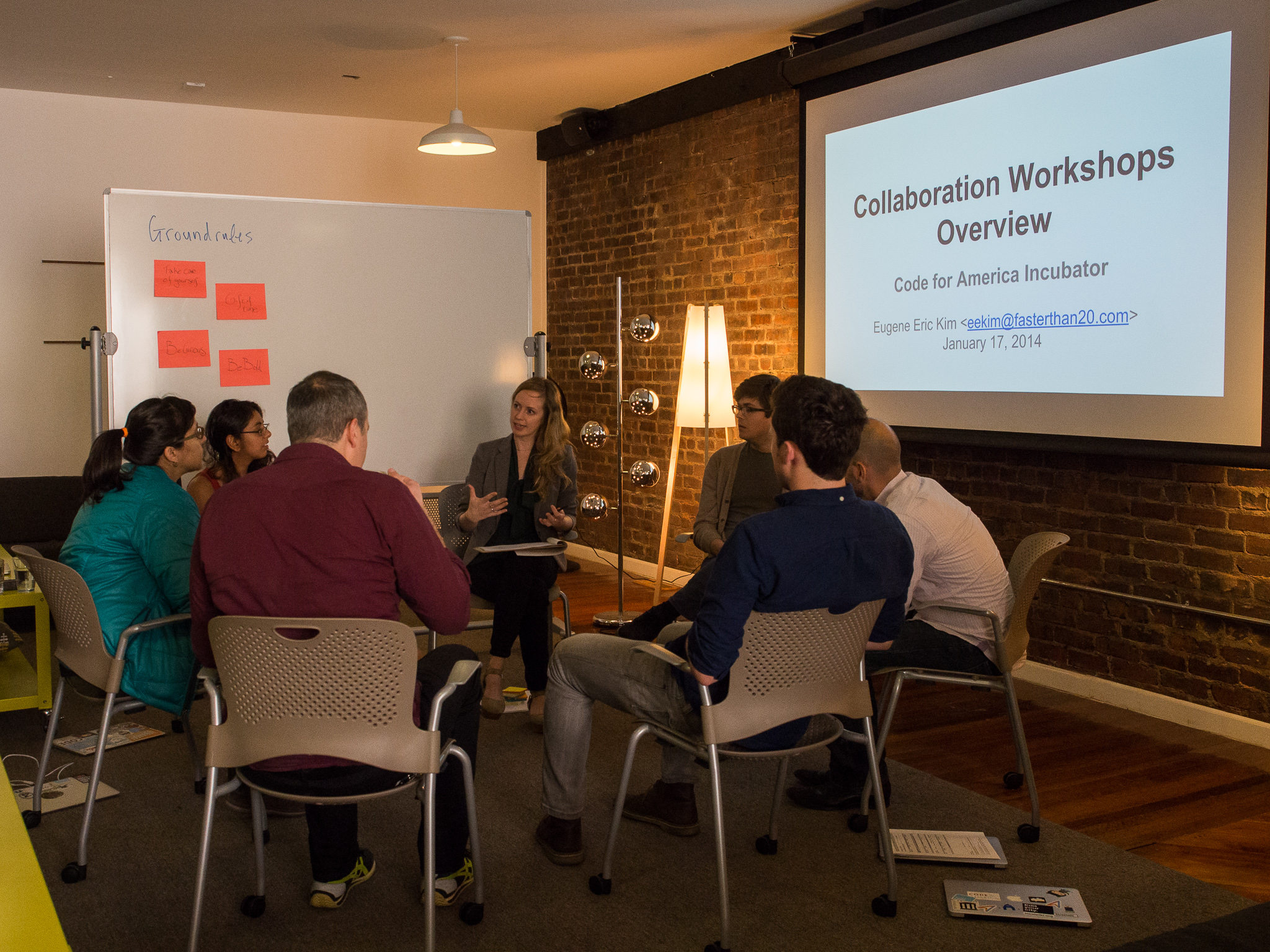
Part three of a three-part essay on facilitating group learning. See parts one, “Getting real about experiments and learning,” and two, “Documenting is not learning.”
Two months ago, I blogged about my experiment with Dharmishta Rood and the Code for America Incubator, which wraps up in another few months. The goal is to help startups — in this case, a company called PostCode — develop great collaborative habits in its formative stage. The theory is that it’s more effective to build good habits from the start than it is to try to change bad habits later.
About a third of the way into our experiment, Dharmishta and I started discussing whether or not we thought it was working. We thought that it was, but we weren’t sure whether or not the folks at PostCode would agree. “We’re missing soap bubbles,” Dharmishta asserted.
“Huh?!” I responded.
Soap, Dharmishta explained, does not naturally produce bubbles. Manufacturers add chemicals to make soap lather, even though the resulting bubbles have no impact on cleanliness. In fact, some chemicals have adverse effects, such as drying out skin.
Why do they do this? Because people associate bubbles with cleanliness. If we don’t see the bubbles, we assume it’s not working, regardless of whether or not that’s the case.
When assessing progress, how you feel matters.
- If you’re learning, and you feel like you’re learning, then all is good.
- If you’re learning, but you’re not feeling like you’re learning, then you have a problem. You may stop doing things that are working, because you don’t realize that they’re actually effective. This is where adding soap bubbles can be useful.
- If you’re not learning, but you feel like you’re learning, then you also have a problem. There is where adding soap bubbles can be harmful.
Given this, how do you design soap bubbles into your learning processes that help, rather than harm you?
It starts by being real about what you can and can’t measure, and it quickly shifts to remembering what you’re trying to achieve in the first place. There is always an intention underlying our instinct to measure, but sometimes, the complexity around measurement causes us to forget that intention.
I’m generally trying to help groups learn how to collaborate more effectively. I want feedback mechanisms that reinforce good habits and discourage bad ones. In PostCode’s case, Dharmishta and I wanted to make sure that the team was communicating and making decisions effectively. We thought that we were seeing progress, but we weren’t sure that the team was seeing the same things we were. We were (and still are) worried that the team would discard the practices before they became habit.
We designed a monthly “assessment” to help PostCode track its progress, and when we started exploring ways to measure effectiveness around communication and decision-making, we decided to take a different approach. Rather than attempting to quantify those things (as we were doing with the other dimensions we were tracking), we decided to ask qualitative questions:
- Please share up to three examples of great, effective communication over the past month.
- Please share up to three examples where communication could have been better over the past month.
(We asked the same questions about decision-making.) These questions will not provide some “objective” measure of how well the company is communicating as a whole or whether or not it is improving over time. However, they will:
- Encourage everybody to regularly pause and reflect
- Surface people’s different perceptions of what is good and what is not
- Identify problems that need fixing while they’re still fresh
- Remind people to celebrate what’s going well
Most importantly, these questions will remind everybody that communication matters, and that they should be practicing consciously and with an eye to improve. The very act of pausing to answer these questions on a monthly basis means that they are. These questions act as soap bubbles, but they also help clean!
Measurement is important, but feedback is even moreso. Figuring out the right things to measure is hard, but creating feedback mechanisms is not. Soap bubbles may not give you objective indicators for tracking progress, but they will — at minimum — remind people of what they’re trying to accomplish and to be conscious of when it’s happening.
Photo by Umberto Salvagnin. CC BY 2.0.
